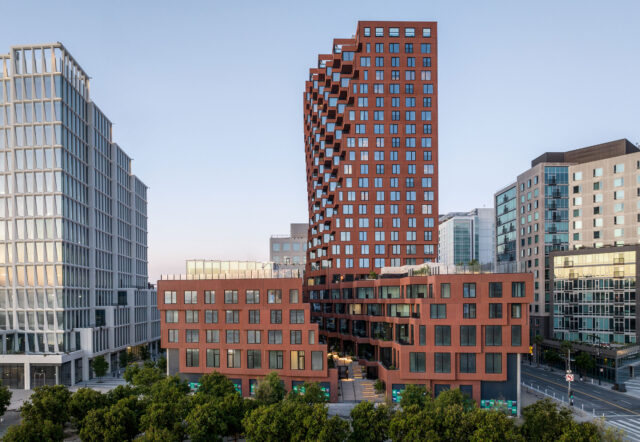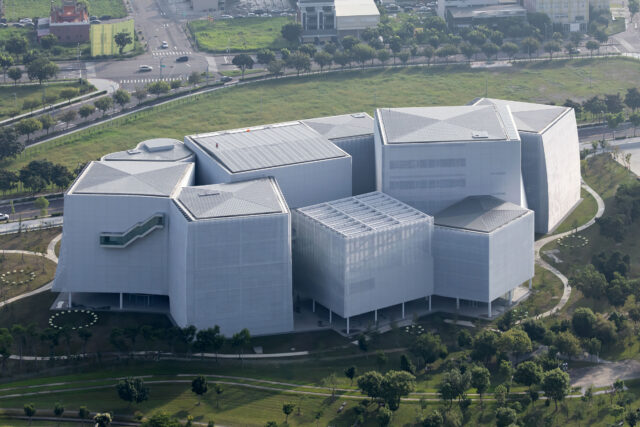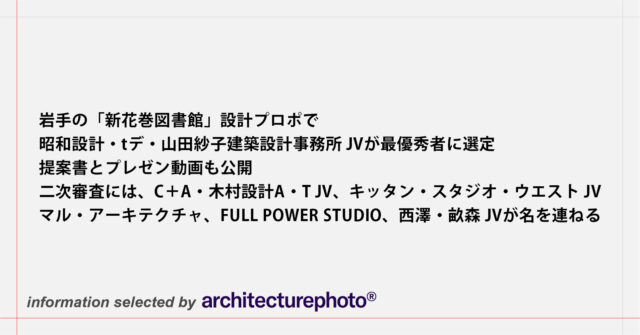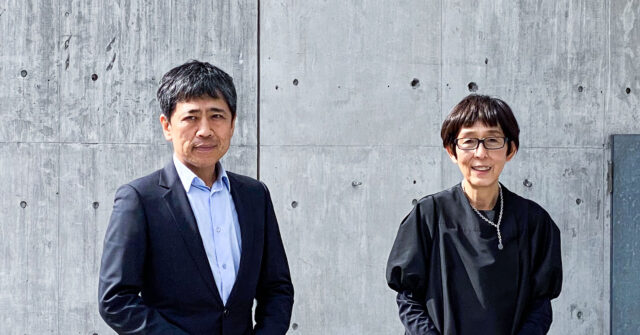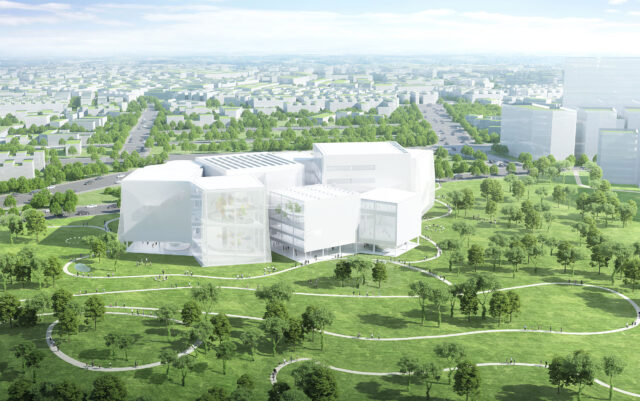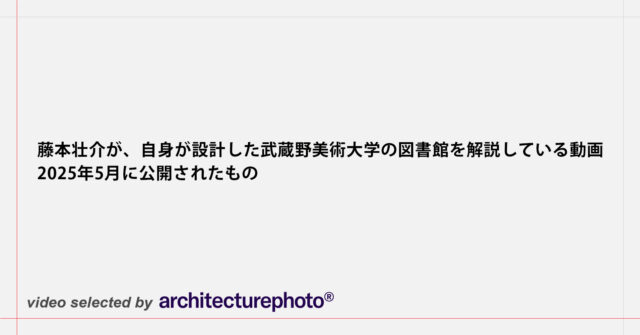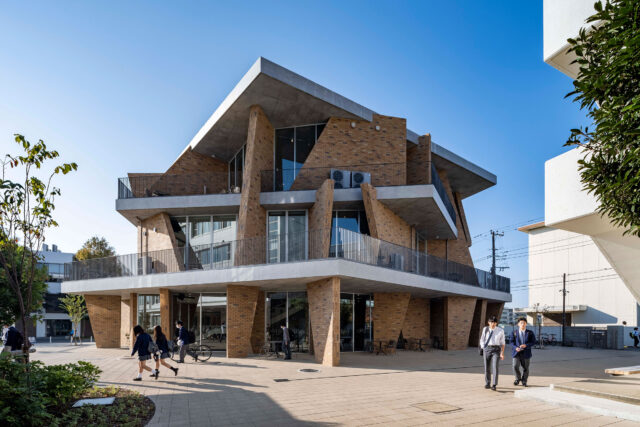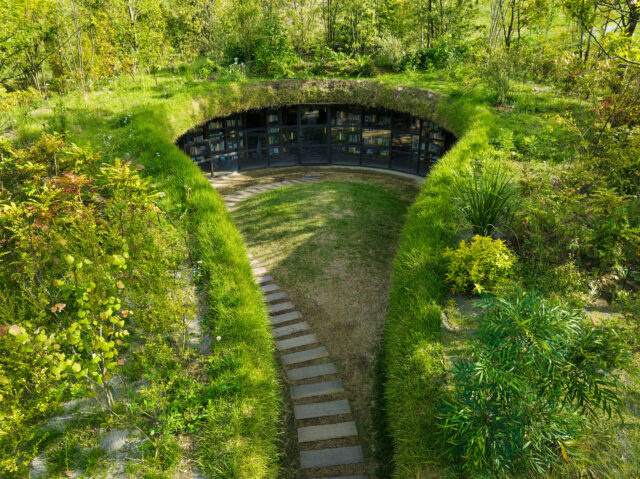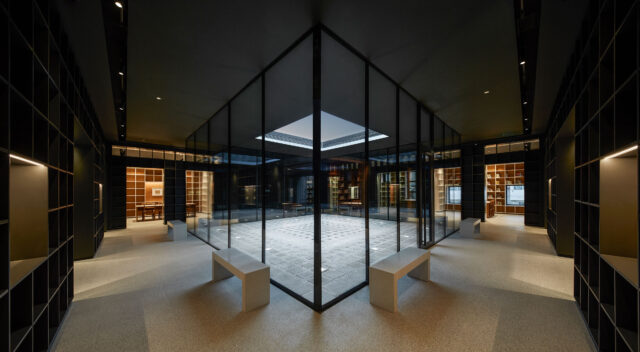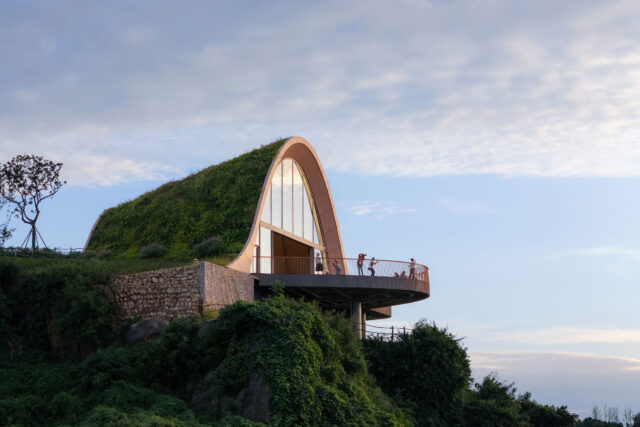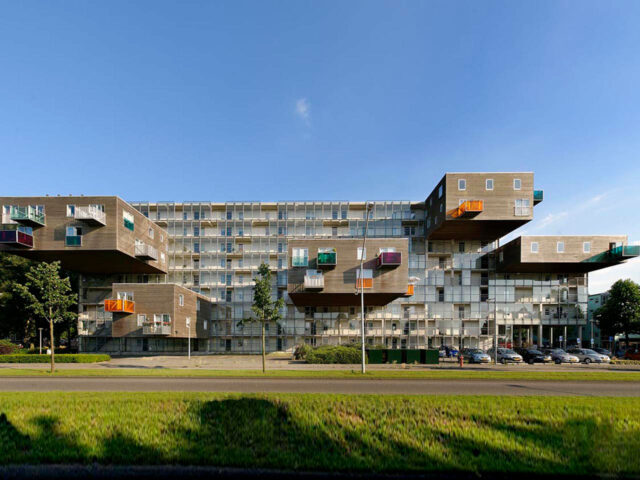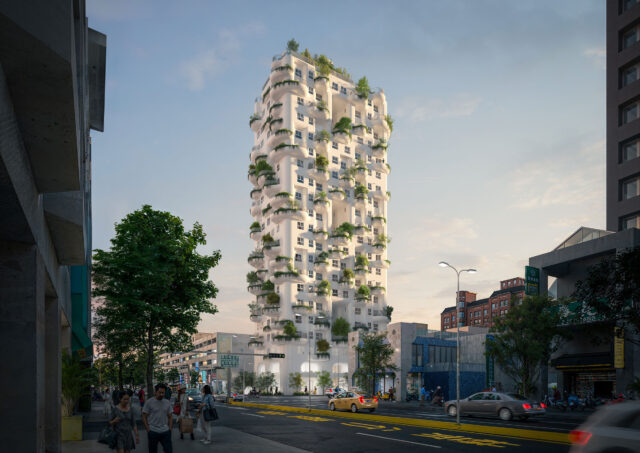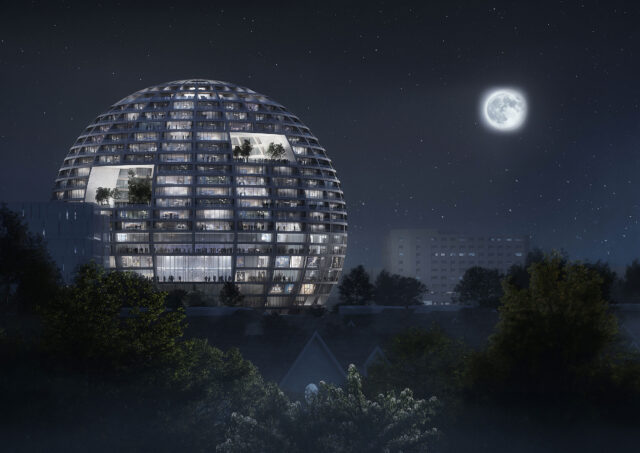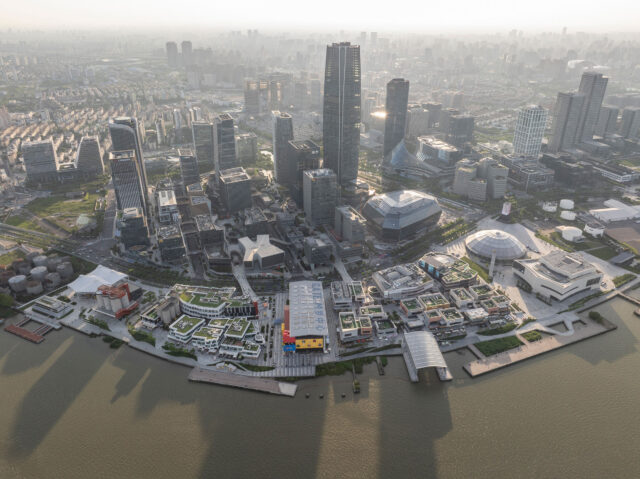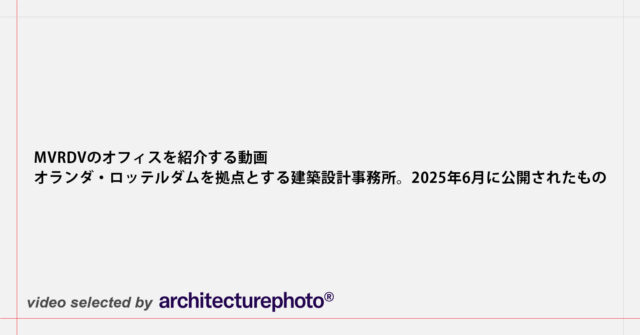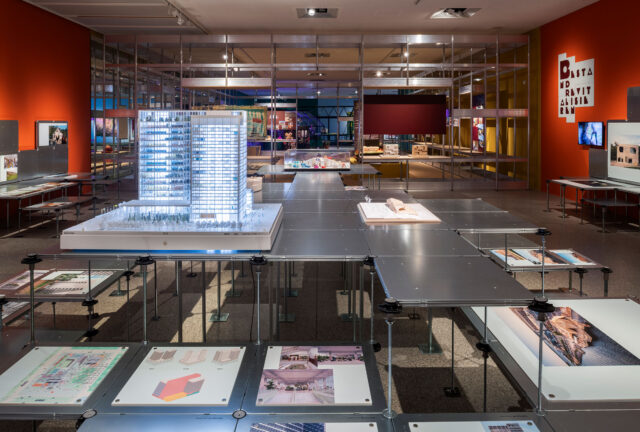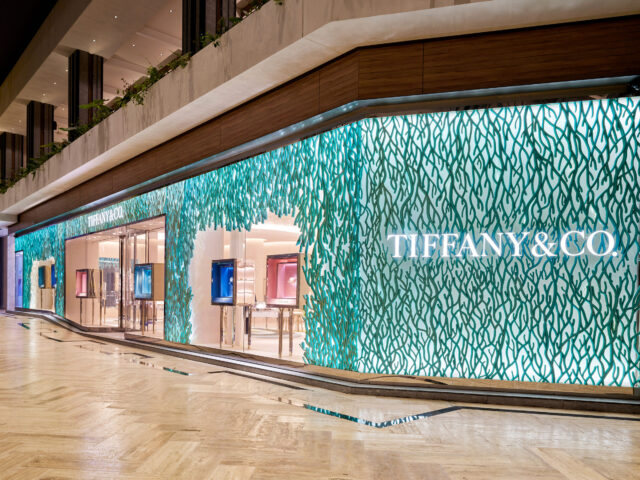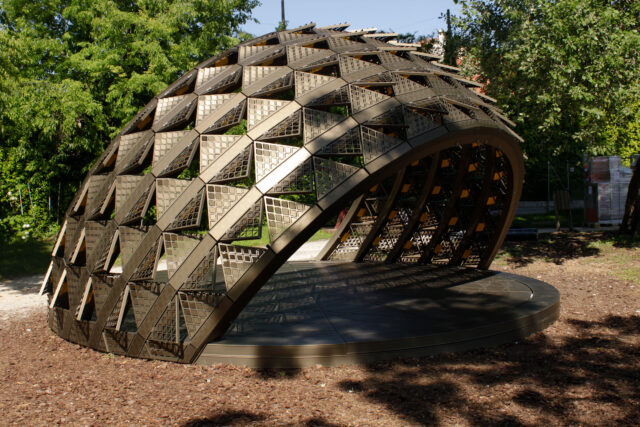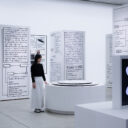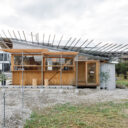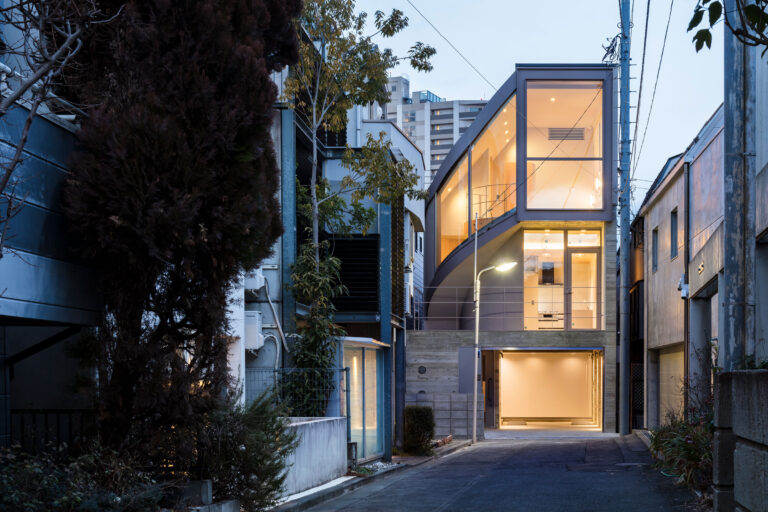
SHARE MVRDVによる、中国の武漢図書館。伝統的な機能と最新の機能を併せ持つ施設。要望への応答と都市経済の工場を目指し、都市の“地形”を参照して“渓谷”の様な内部空間を考案。巨大な窓で内部の活動を視覚的に表現し好奇心も刺激



MVRDVが設計している、中国の武漢図書館です。
伝統的な機能と最新の機能を併せ持つ施設として計画されました。建築家は、要望への応答と都市経済の工場を目指し、都市の“地形”を参照して“渓谷”の様な内部空間を考案しました。また、巨大な窓で内部の活動を視覚的に表現し好奇心を刺激する事も意図されました。
こちらはリリーステキストの翻訳
本の渓谷:MVRDVが、武漢図書館の勝利案を公開
MVRDVは、中国・武漢の新しい中央図書館の設計コンペを勝利しました。中国最大級の図書館となる予定のこのプロジェクトは、14万㎡の敷地に、書斎、リビングルーム、読書室、スタジオなどの多様なスペースを備え、伝統的な機能と非伝統的な機能を併せ持っています。この建物は、3つの大きな開口部を通して周囲とつながり、建物内の生活を視覚的に表現することで、好奇心を刺激することでしょう。この特徴的な3面体の流線型は、2つの川の合流地点にある「百湖の都市」の位置を祝しています。そして、武漢の新たなランドマークとなることでしょう。
武漢図書館は、武漢の中心街にある宝峰陸橋のすぐそばの視認性の高い場所に位置しています。武漢図書館は、文学、情報サービス、科学技術革新と研究資源を統合した図書館です。新図書館は、武漢の公共情報サービスシステムを改善し、読書、学習、コミュニケーション、イノベーションなどの機能的なニーズを満たすとともに、市の都市経済を向上させるものです。
建物のコンセプトは武漢の地形からヒントを得て、川の彫刻的な力をその形だけでなく、内部の特性、空間の質、素材に反映させています。周囲の建物の異なる高さを参考にしたフォルムで、3つのドラマチックなピクチャーウィンドウが、それぞれ異なる視点で都市に面しています。各開口部からは、それぞれ異なる景色を眺めることができます。3つの窓のうち最も高い窓は、CBDのスカイラインに面しています。低くて広い窓からは、向かいの公園のパノラマビューが楽しめます。そして、長くカーブした窓は隣接するプラザを取り囲み、通行人に内部の活気を垣間見せるようになっています。
インテリアのコンセプトは、武漢が川の合流地点に位置し、都市の景観に囲まれているという概念をさらに強めています。階段状の本のテラスは渓谷の彫刻的なラインを思わせます。そして、1階の広いパブリックスペースで一日中楽しむことができます。テラスにあるパヴィリオンのようなスペースには、図書館のさまざまなプログラムが収められ、渓谷は、静かな読書エリア、グループ作業エリア、本棚を地形の一部として、異なるゾーンとインテリア体験を形づくります。リーディングキャニオンは極めて重要な空間であり、建物内に集まる知の合流点を表現しています。
MVRDVの創設パートナーであるヤコブ・ファン・ライスは、言います。
「中に入ると、ある種の風景的な要素がまとまっています」「勉強に使える一連の台地があります。一番大きいのは、人気のあるエリアの為でしょう。上に行くほど静かな書斎や読書スペースがあり、来客のニーズに応えています。武漢の地形は、重要なインスピレーションの源でした。私たちは、湖に向かって水平に広がる景色を思い浮かべ、一方では、高層ビルが立ち並ぶ都市に向かって垂直に広がる景色を思い浮かべました。自然対都市ということで、そこに焦点を合わせた建物になっています。そのため、人が集まる場所として刺激的な場になると思います。
都市レベルでは、壮大なインテリア渓谷が訪れる人を内部に引き込んでいます。また、周辺の公園では武漢の気候に合わせた植栽を行い、長期的に持続可能なメンテナンスを確保します。強い日差しが当たる場所には背の高い木が涼しさをもたらし、主なパブリックエリアは建物の北西角で日陰になります。在来種の植物はメンテナンスがほとんど必要なく、年間を通して鮮やかさを保ち、雨季には水をろ過し、夏の暑い時期にはヒートアイランド現象を軽減します。
武漢の暑い気候の中で、エネルギー消費を抑えるために、いくつかの対策がとられています。建物のファサードには、本棚のような模様のルーバーが組み込まれており、建物の機能を伝えながら、内部を遮光しています。このルーバーは、日陰が必要な場所ほど密に配置されています。一方、建物の台座を後退させ、大きなキャンティレバーを設けることで、日陰を提供しています。また、自然換気のための開口部やスマートデバイスの使用、効率的な照明システムによってエネルギー需要をさらに削減し、図書館の流れるような屋根形状に組み込まれたソーラーパネルによって、再生可能エネルギーを供給しています。
MVRDVが中国向けに設計した図書館は、これが初めてではありません。2017年、MVRDVは天津市の文化地区を提供するための大規模なマスタープランの一部として、天津濱海図書館を発表しました。33,700m2の文化センターは、光り輝く球体の講堂と床から天井まで続く滝のような本棚を備えています。武漢図書館と同様、この図書館は単なる教育施設ではなく、社会空間として、また公園から市の文化地区へのコネクターとして機能しています。
以下の写真はクリックで拡大します































以下、リリーステキストです。
A canyon of books: MVRDV reveals winning design for Wuhan Library
MVRDV has won the competition to design a new central library for Wuhan, China. Poised to become one of the largest libraries in China, the 140,000-square-metre project combines traditional and non-traditional functions with diverse study, living room, reading, and studio spaces. The building connects to its surroundings via three large openings that will act as visual displays of life inside the building, sparking curiosity and intrigue. This distinctive, three-faced flowing shape celebrates the position of the “city of 100 lakes” at the confluence of two rivers, and will become a new recognisable landmark for Wuhan.
Located at a highly visible site next to the Baofeng overpass in Wuhan’s Central Business District, the Wuhan Library will integrate literature, information services, as well as scientific and technological innovation and research resources. The new library will improve Wuhan’s public information service system, and meet functional needs in terms of reading, learning, communication, and innovation, while enhancing the city’s urban economy.
The building concept takes its cues from the geography of Wuhan, celebrating the sculptural force of the rivers not only in its form but also in its interior character, spatial qualities, and materials. It references the different heights of the surrounding buildings in its form, with three dramatic picture windows facing the city at different vantage points. Each opening addresses a discrete view: the tallest of the three windows faces the CBD’s skyline; a low, wide window offers panoramic views of the park opposite; and a long, curving window embraces the adjacent plaza, offering passers-by a glimpse of the vibrancy inside.
The interior concept further reinforces the notion of Wuhan’s position at the confluence of rivers, surrounded by the city landscape. The stepped terraces of books invoke the sculptural lines of a canyon, with a broad ground-floor public space that visitors can enjoy throughout the day. Pavilion-like spaces on the terraces contain the library’s different programme and the canyon gives shape to different zones and interior experiences, with quiet reading areas, group work areas, and bookshelves as part of its topography. The reading canyon is a pivotal space, and represents a confluence of knowledge coming together inside the building.
“Going inside, certain landscape elements come together,” says Jacob van Rijs, founding partner of MVRDV. “There is a series of plateaus that can be used for studying. The biggest one will be for the more popular areas. The higher up you go, the quieter the study and reading spaces will be, serving the needs of visitors. The topography of Wuhan was an important source of inspiration: we have this idea of a horizontal view towards the lakes and on the other hand, we have this more vertical view towards the city with the high rises. This is nature versus the city, and the building is somehow focusing on this. I think this makes it an exciting place to gather.”
At an urban level, the grand interior canyon draws visitors inside. In the surrounding park, planting will complement Wuhan’s climate conditions to ensure long-term sustainable maintenance. Tall trees provide cooling in areas that experience intense sunlight, while the main public areas are shaded by the northwest corner of the building. Native vegetation requires little maintenance and maintains a year-round vibrancy, while filtering the water in the rainy season and reducing the heat island effect during hot summer months.
Several measures are taken to reduce energy consumption in Wuhan’s hot climate. The building’s facade incorporates louvres in a bookshelf-like pattern, communicating the building’s function as they shade the interior. These louvres are more densely packed in the
places that need the most shade from the sun; meanwhile, the building’s plinth is set back to create large cantilevers that offer shade. Openable elements for natural ventilation, combined with the use of smart devices and an efficient lighting system further reduce the building’s energy demands, while solar panels incorporated into the library’s flowing roof shapes provide the building with renewable energy.
This is not the first library MVRDV has designed for China: in 2017, MVRDV presented the Tianjin Binhai Library as part of a larger masterplan to provide a cultural district for the city. The 33,700m2 cultural centre features a luminous spherical auditorium and floor-to-ceiling cascading bookcases. Just like the Wuhan Library, this library functions as more than an educational centre: it serves as a social space and connector from the park into the city’s cultural district.

